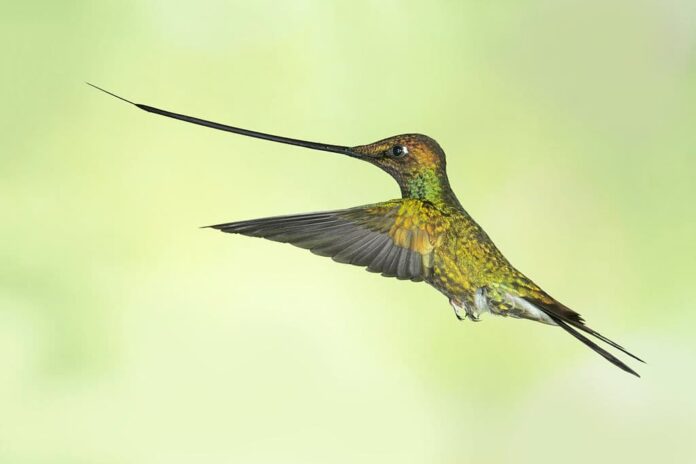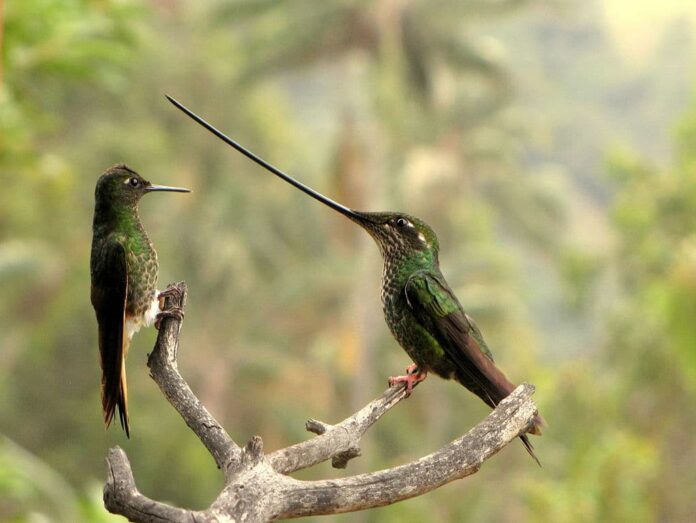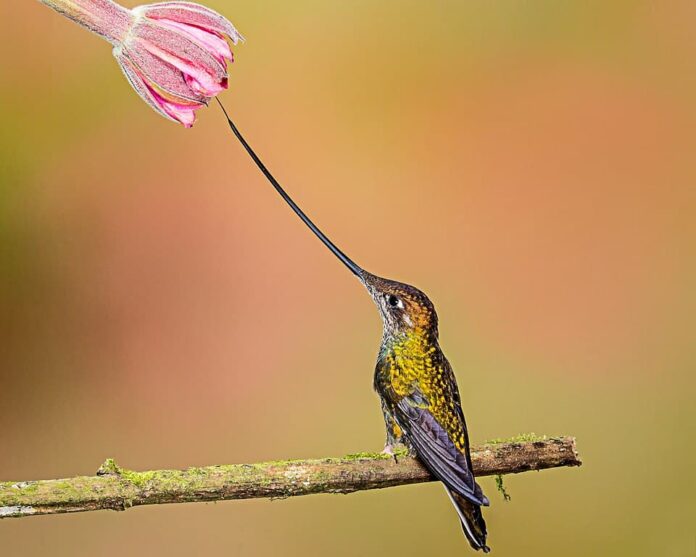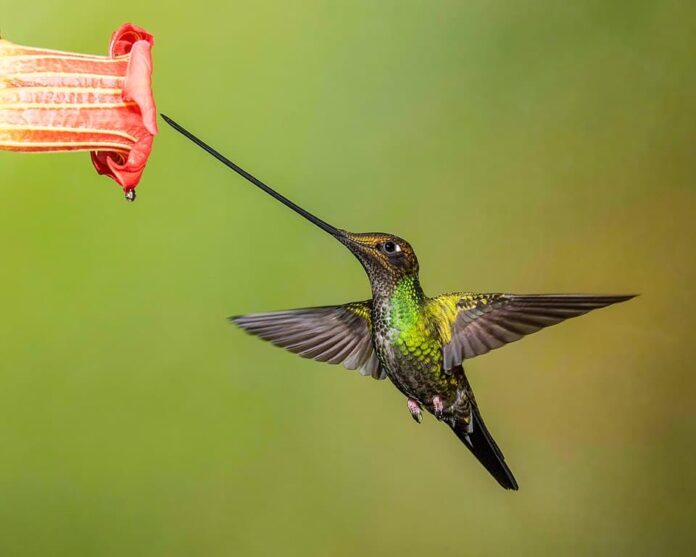Sword-billed hummingbird has an appearance that is true to its name, with a bill so long it looks like a sword. More than that, it is the only bird whose bill is longer than the rest of the body; including the tail. The fascinating appearance has sparked my interest, and I am going to provide more information about this stunning bird species below.
1Appearance

Sword-billed hummingbirds are among the largest hummingbird species, growing up to 14 centimeters long excluding the bill. One of the most recognizable characteristics of a swordbill is its unusually long bill. In fact, it is the only bird species to have a beak larger than the rest of its body. The bill alone can grow to as long as 12 centimeters, making it the hummingbird species with the longest bill. Their bills are black, heavy, and slightly upturned to reduce the strain of the weight and improve balance.
When it comes to coloration, sexual dimorphism occurs in this species. Males have bronze-green upper parts along with coppery-bronze heads, dusky throats, and a discreet white spot behind the eye. As for the underparts, they are metallic green with a gray belly and a forked blackish bronze-green tail. While females, they have similar upper parts but with white underparts, grayish throats, and speckled-green bellies. A female’s tail is less deeply forked, and it has a grayish-white edge.
2Behavior

Hummingbirds are solitary in general, and they only come together to breed. When it comes to getting together, these hummingbirds have multiple mates in order to increase reproductive success. The males will separate from the female immediately after copulation, looking for new mates. Females will lay two eggs in nests they made from moss and plant, and raise the chicks by themselves. Newborns are blind and immobile so they depend on their mother entirely for food and protection. The mom pushes the food down the chicks’ throats with her long bill directly into their stomachs. However, the chicks are ready to leave the nest within 7 to 10 days.
3Feeding & Habitats

Sword-billed hummingbirds use their long bill to drink nectar from flowers with long corollas that other birds can’t reach. As trap-line feeders, these hummingbirds feed on nectar from devil’s snare, passionflowers, red angel’s trumpet, and other flowering plants. They are most attracted to bright tubular-shaped flowers due to the highest sugar count they have. Alongside flowers, swordbills also feed on flying insects by keeping their bill open when flying. They also snatch insects off leaves or branches and take insects or spiders from spider webs.
The common habitats of these tiny birds are in the tropical cloud forests of the Andean region of South America. Simply put, this area has an abundant supply of nectar-producing flowers and plants that they can feed on. These forests are in South American countries including Bolivia, Colombia, Ecuador, Peru, and Venezuela.
4Threats
Sword-billed hummingbirds are listed as Least Concern on the IUCN Red list which is a good thing. They have a large range without having any major threats or significant population decline at all. If we talk about possible threats, that would be climate change and deforestation which can cause food and habitat loss.
Related Post: Birds With Long Bills




